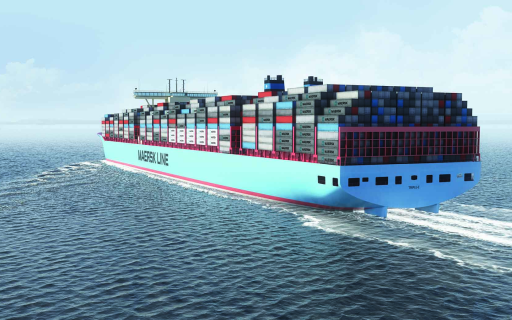De wereldwijde ruggengraat van bulklogistiek
In de wereld van internationale handel is het op een kostenefficiënte en betrouwbare manier verplaatsen van grote goederenstromen een topprioriteit. Zee Vervoer is het fundament van deze beweging geworden en maakt het voor industrieën mogelijk om enorme hoeveelheden goederen over continenten heen te transporteren met minimaal milieueffect en beheersbare kosten. Naarmate de mondiale handel complexer wordt, neemt de rol van zeevracht steeds meer toe in het waarborgen van de doorstroming van de supply chain.
Van grondstoffen zoals kolen en graan tot eindproducten zoals auto's en elektronica, Zeevervoer biedt een zeer schaalbare en toegankelijke optie. Het gebruik van genormeerde containers, efficiënt scheepsontwerp en internationale havenconnectiviteit maakt dit transportmiddel het meest effectief voor het vervoeren van bulkverzendingen over lange afstanden.
Economische efficiëntie in zeevervoer
Lagere kosten per verzonden eenheid
Een van de belangrijkste voordelen van zeevervoer is de mogelijkheid om goederen tegen lagere kosten per eenheid te transporteren. Bij grote verzendingen daalt de marginale kost voor het verplaatsen van elke extra eenheid aanzienlijk. Dit is met name belangrijk voor fabrikanten en leveranciers die werken met smalle marge.
Precies om deze reden zijn bulkverzendingen van goederen zoals olie, metalen en landbouwproducten afhankelijk van zeetransport. Dankzij gespecialiseerde bulkcarriers en containervaartuigen kunnen bedrijven tienduizenden tonnen vervoeren in een enkele reis, zonder dat de logistiekkosten oplopen. Deze efficiëntie is bijna onmogelijk te evenaren met andere vormen van vrachtvervoer.
Hoge laadcapaciteit en consolidatie
Zeetransport is ideaal voor geconsolideerde lading, waardoor meerdere zendingen in één container of ruim van een schip kunnen worden gecombineerd. Dit verlaagt de handlingskosten en beperkt vertragingen die worden veroorzaakt door versnipperde logistieke operaties. Voor bedrijven die zowel grondstoffen als eindproducten moeten verzenden, biedt dit geconsolideerde model een efficiënte oplossing.
Schepen zijn ontworpen om enorme ladingen te vervoeren, waaronder overmaatse uitrusting, industriële machines en bulkgoederen. Daardoor profiteren zelfs de meest veeleisende logistieke operaties van de ongeëvenaarde capaciteit die zeevervoer biedt. Deze schaalbaarheid ondersteunt zowel grootschalige supply chains als groeiende internationale bedrijven.

Milieuvriendelijke voordelen van zeevervoer
Verminderde koolstofvoetafdruk
Ondanks het feit dat zeevervoer een logistieke methode met hoge capaciteit is, staat het bekend om zijn relatief lage CO2-uitstoot per ton vervoerde lading. Sterker nog, scheepvaart is een van de meest brandstofefficiënte manieren om goederen wereldwijd te transporteren. Deze efficiëntie draagt bij aan de duurzaamheidsdoelstellingen van bedrijven die hun milieubelasting willen verminderen.
Naarmate brandstoftechnologie zich ontwikkelt en emissieregels strenger worden, blijft zeevervoer innoveren. De toepassing van schonere brandstoffen en het gebruik van langzamer vaarpraktijken verlagen de koolstofuitstoot verder, waardoor zeevervoer een sterke partner wordt in duurzame wereldwijde handel.
Ondersteuning voor circulaire en groene economieën
Zeevracht speelt een cruciale rol bij het in stand houden van circulaire economieën door de transportmogelijkheid van recyclebare materialen en herbruikbare producten. Grote hoeveelheden schrootmetaal, gebruikte elektronica en gerecycled plastic zijn afhankelijk van betaalbare en betrouwbare zeevracht om de verwerkingsinstallaties te bereiken.
Dit draagt bij aan langetermijnduurzaamheid door materialen langer in gebruik te houden en minder afhankelijk te zijn van de winning van nieuwe grondstoffen. Door deelname aan deze logistieke stromen draagt zeevracht bij aan een schonere wereldwijde economie, terwijl kostenbeheersing en efficiëntie behouden blijven.
Wereldwijde bereikbaarheid en infrastructuur
Uitgebreid netwerk van havens
Een van de kernsterktes van zeevracht is de toegang tot een uitgebreid wereldwijd netwerk van havens. Van grote internationale knooppunten tot regionale terminals, deze infrastructuur stelt bedrijven in staat zelfs de meest afgelegen bestemmingen te bereiken. Het feit dat containerhavens aanwezig zijn in vrijwel elk kustland, vereenvoudigt invoer- en uitvoeractiviteiten.
Deze brede toegankelijkheid verbetert de handelsefficiëntie en vergemakkelijkt de douane-afhandeling. Dankzij geïntegreerde opslagfaciliteiten, overslagpunten en verbindingen voor binnenlandse transporten, vormt zeetransport het fundament van vele mondiale supply chains.
Seamless Intermodal Integration
Modern zeetransport is ontworpen om naadloos te integreren met andere vrachtopties zoals spoor en weg. Containerisatie maakt het mogelijk om goederen moeiteloos tussen schip, vrachtwagen en trein te verplaatsen zonder de noodzaak van hernummering. Deze intermodale compatibiliteit stroomlijnt operaties en verbetert de levertijden.
Voor bedrijven die een balans zoeken tussen kosten, snelheid en efficiëntie, is zeetransport een ideale basis. Door gebruik te maken van intermodale oplossingen, kunnen bedrijven hun routeflexibiliteit maximaliseren en tegelijkertijd de risico's van handelingen en operationele kosten minimaliseren.
Betrouwbaarheid bij het beheren van bulk- en gespecialiseerde lading
Consistente planning en volume-afhandeling
Hoewel zeevervoer niet dezelfde snelheid biedt als luchtvracht, onderscheidt het zich door betrouwbaarheid en consistentie. Scheepvaartmaatschappijen werken volgens goed gevestigde routes en schema's, waardoor bedrijven met vertrouwen hun voorraad- en productieplanning kunnen maken.
Schepen zijn ontworpen voor transport in grote volumes, en havens zijn geoptimaliseerd voor snel laden en lossen. Deze efficiëntie is essentieel voor bedrijven die met bulkgoederen werken, waarbij de constante stroom en timing bepalen voor de winstgevendheid.
Op maat gemaakte oplossingen voor sector-specifieke behoeften
Verschillende industrieën hebben unieke logistieke behoeften, en zeevervoer is geëvolueerd om hieraan tegemoet te komen. Tankerschepen, koelschepen en roll-on/roll-off-schepen zijn specifiek ontworpen om te voldoen aan de eisen van bepaalde ladingtypen. Of het nu gaat om chemicaliën, bevroren goederen of auto's, er is altijd een geschikte maritieme oplossing beschikbaar.
Deze aanpasbaarheid ondersteunt de transportbeweging van gevoelige of gereguleerde materialen onder strikte nalevingsnormen. Naast het bieden van flexibiliteit, zorgt zeevracht voor rust door middel van een robuust systeem van documentatie, inspectie en verzekeringen.
Technologische ontwikkelingen in de zeecontainerservice
Slimme scheepvaart en automatisering
Technologie verandert de zeevracht door automatisering en digitalisering. Slimme schepen uitgerust met real-time tracking, voorspellend onderhoud en AI-gestuurde navigatie verbeteren de betrouwbaarheid en veiligheid. Deze tools optimaliseren ook de routetijden, brandstofverbruik en de doorlooptijd in de haven.
Door te investeren in digitale logistiekplatforms verbeteren rederijen de transparantie en coördinatie. Klanten profiteren van end-to-end zichtbaarheid, tijdige updates en vereenvoudigde documentprocedures, waardoor administratieve lasten en vertragingen bij zendingen afnemen.
Gegevensgestuurde besluitvorming
Zeevaart steunt steeds meer op data om besluitvorming te ondersteunen. Voorspellende analyses helpen bij het vooraf inschatten van vraag, weersomstandigheden en havenspieken. Hierdoor kunnen vrachtverantwoordelijken tijdig routes en planningen aanpassen, risico's minimaliseren en de prestaties verbeteren.
Digitale tweelingen, blockchain en IoT-sensoren worden eveneens geïntegreerd in goederenoperaties. Deze innovaties maken real-time toestandsbewaking mogelijk voor temperatuurgevoelige of hoogwaardige zendingen, waardoor een extra laag van vertrouwen en controle wordt toegevoegd aan de maritieme logistiek.
Aanpasbaarheid voor een langetermijnlogistiekstrategie
Omgaan met seizoensgebonden en marktfluctuaties
Zeevaart biedt flexibiliteit die langetermijnplanning ondersteunt. In sectoren met seizoensgebonden vraag laat bulktransport bedrijven toe om op voorhand voorraad aan te schaffen en inventaris effectief te beheren. Detailhandel, landbouw en bouwsector profiteren sterk van deze planningsmogelijkheid.
Met de capaciteit om plotselinge pieken in vraag op te vangen, stelt zeevracht bedrijven ook in staat snel te reageren op markttrends of verstoringen. Deze reactiesnelheid versterkt de veerkracht van de supply chain en vermindert de afhankelijkheid van dure spoedverzendingsopties.
Ondersteuning van wereldwijde groei en handelsexpansie
Naarmate bedrijven internationaal groeien, wordt zeevracht een betrouwbare groeimotor. Het biedt de benodigde infrastructuur en netwerktoegang om nieuwe markten te betreden en leveranciersrelaties op te bouwen over continenten heen. Met consistente transittijden en kostenefficiënte tarieven kunnen bedrijven hun activiteiten met vertrouwen uitbreiden.
Deze wereldwijde compatibiliteit is vooral gunstig voor midden- en kleinbedrijven die deelnemen aan grensoverschrijdende handel willen. Zeevracht helpt het speelveld te egaliseren, vermindert toegangsbarrières en stelt in staat zich wereldwijd competitief te positioneren.
Veelgestelde vragen
Welke soorten goederen zijn het beste geschikt voor zeevracht?
Losse goederen, oversize lading, machines, rauwe materialen en containergoederen zijn uitermate geschikt voor zeevervoer vanwege de hoge capaciteit en kosten-efficiëntie.
Hoe lang duurt zeevervoer doorgaans?
De transittijd hangt af van afstand en route, maar internationaal zeevervoer duurt meestal enkele dagen tot een paar weken. Planning en plannen helpen tijdsgerelateerde uitdagingen te verminderen.
Is zeevervoer milieuvriendelijk?
Ja, zeevervoer heeft een van de laagste koolstofuitstoot per ton-kilometer. Nieuwe technologieën en schonere brandstoffen blijven de milieuprestaties verbeteren.
Wat zijn de belangrijkste beperkingen van zeevervoer?
Langzamere leveringssnelheden en mogelijke weersinvloeden kunnen uitdagingen zijn. Echter, doorgedreven planning en betrouwbare plannen helpen deze problemen effectief te beheren.
Inhoudsopgave
- De wereldwijde ruggengraat van bulklogistiek
- Economische efficiëntie in zeevervoer
- Milieuvriendelijke voordelen van zeevervoer
- Wereldwijde bereikbaarheid en infrastructuur
- Betrouwbaarheid bij het beheren van bulk- en gespecialiseerde lading
- Technologische ontwikkelingen in de zeecontainerservice
- Aanpasbaarheid voor een langetermijnlogistiekstrategie
- Veelgestelde vragen



